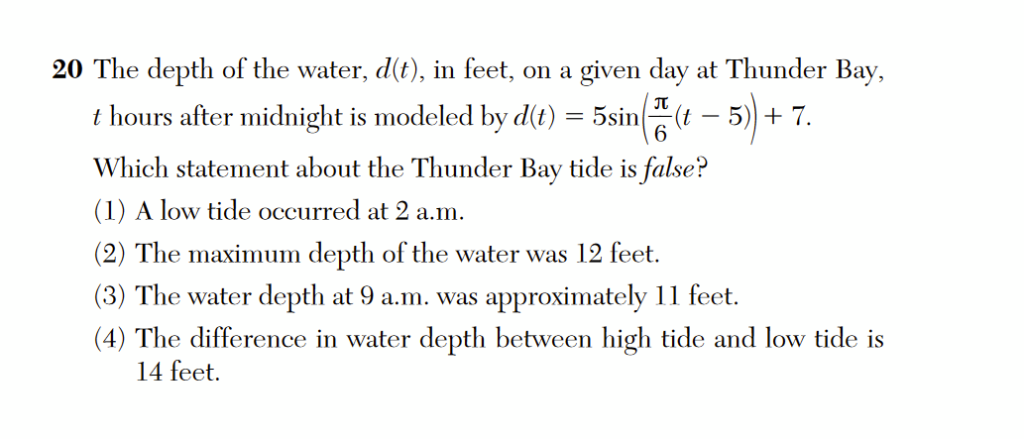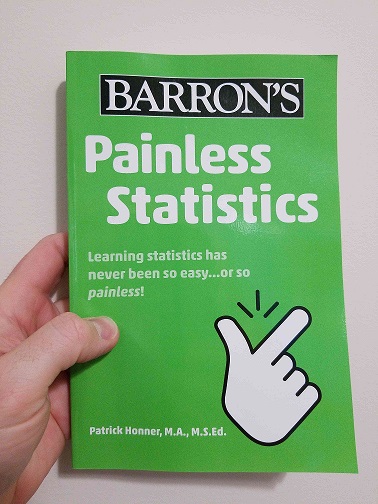On the one hand, it’s good that standardized math tests are trying to include more examples of mathematical modeling, one of the true applications of math to the real world. On the other hand, if these tests promote a false, even dangerous, idea of what a mathematical model is, then they shouldn’t bother trying.
This question from the New York State Algebra 2 Regents exam commits a fundamental error of mathematical modeling: it confuses the model for the phenomenon itself.
Is the maximum depth of the water 12 feet? We don’t know. The model of the water’s depth, d(t), takes a maximum value of 12 feet, but the model is only an approximation of reality. The actual maximum depth of the water is likely to differ from the model, as are the times of high and low tide. We can’t draw specific conclusions like (1), (2), or (4), we can only approximate. This means that all these statements are probably false.
Oddly enough, answer choice (3) seems to understand that models are just approximations, which makes the other answer choices even less defensible. (And all of this ignores the question of whether or not students have the requisite domain-specific knowledge of oceanography to understand what high- and low- tides are.)
In the grand scheme of these exam errors, this is a minor footnote. But as I’ve argued in these posts, and in my talk g = 4, and Other Lies the Test Told Me, these kinds of errors have a cumulative effect of training students to stop thinking when doing and applying math and instead just try to guess what the question writer wants to hear. We should expect more from our assessments.
Related Posts
- Regents Recaps
- June 2022 Algebra 2 Regents Exam (Twitter Thread)
- Regents Recap — January 2018: Problems with Pre-Calculus
- Regents Recap — August 2015: Modeling Data




